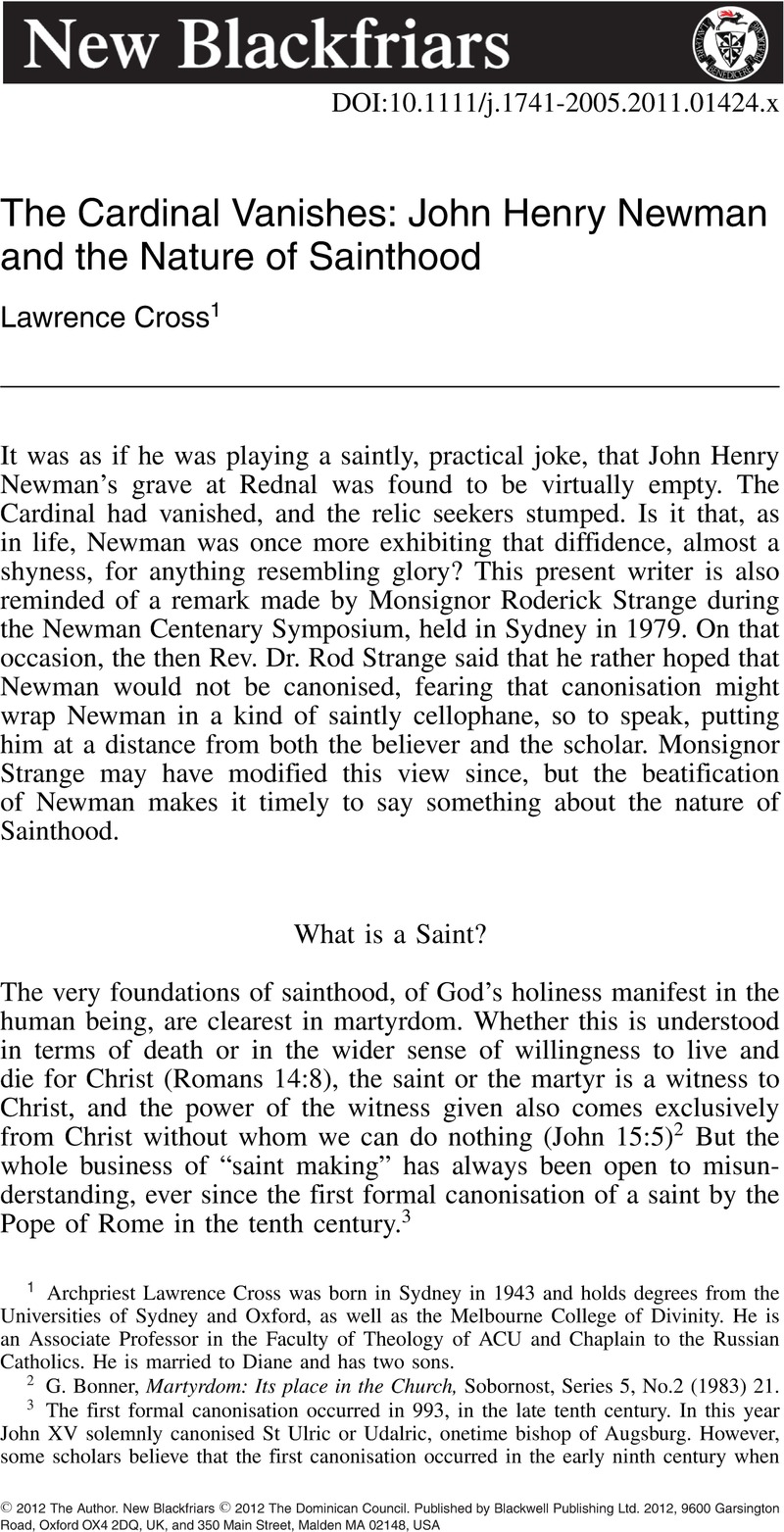No CrossRef data available.
Published online by Cambridge University Press: 01 January 2024

Archpriest Lawrence Cross was born in Sydney in 1943 and holds degrees from the Universities of Sydney and Oxford, as well as the Melbourne College of Divinity. He is an Associate Professor in the Faculty of Theology of ACU and Chaplain to the Russian Catholics. He is married to Diane and has two sons.
2 G. Bonner, Martyrdom: Its place in the Church, Sobornost, Series 5, No.2 (1983) 21.
3 The first formal canonisation occurred in 993, in the late tenth century. In this year John XV solemnly canonised St Ulric or Udalric, onetime bishop of Augsburg. However, some scholars believe that the first canonisation occurred in the early ninth century when it is said that St Swibert was canonised by Pope Leo III in 804. The tenth century is more probable.
4 The Church of early Kiev-Rus is a good example, receiving and venerating saints of both East and West.
5 Julian, Against the Galilaeans, 335C (Loeb ed. iii. 915).
6 Bowra, C. M., Heroic Poetry (London: Macmillan, 1952) 4Google Scholar.
7 Nicholas Cabasilas, Life in Christ, PO 150, 564 CD.
8 St John Chrysostom, Hom. 7 in 2 Cor., PO 61, 448.
9 Nicholas Cabasilas, Life in Christ, PO 150, 504 BC.
10 Ibid,. PG 496 CD.